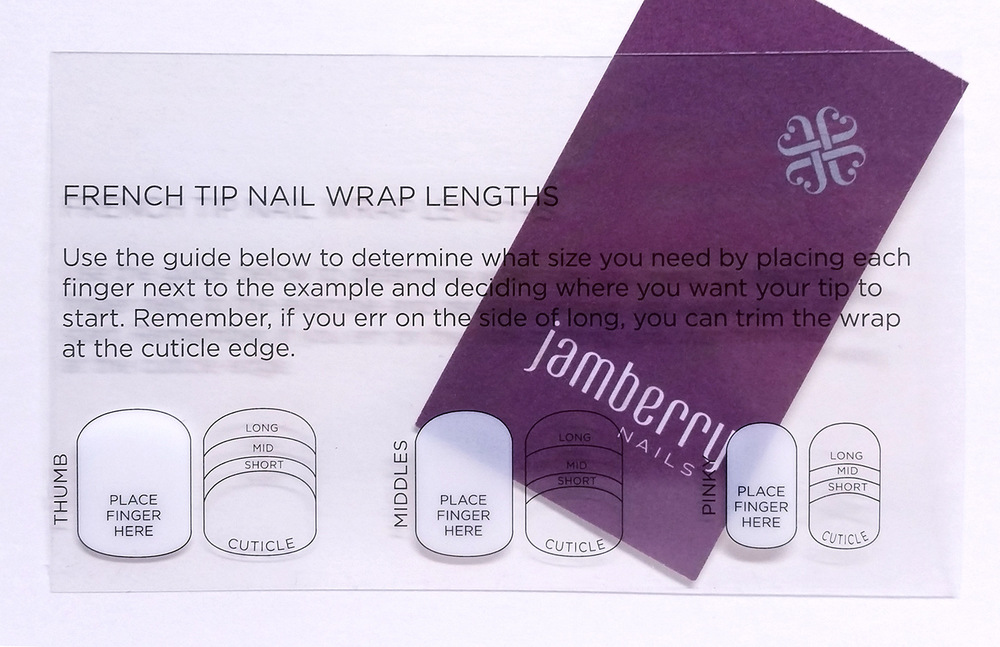After the full coverage wraps were off and running, the next step was different types of wraps. In January of 2012 we began working on a french tip wrap that could give the appearance of a salon applied tip, it's something the customers had been asking for and it was time to tackle it. The challenge came in trying to find a tip product that could be kept to a minimum of manufactured sizes and SKUs and fit as many people as possible. The fit refers to the length of the tip in proportion to the length of any given customer’s nail. The range between short and long tips was roughly 1/2 inch and we had to figure out the size breaks between short, medium and long within that distance. We measured the nail lengths of about eight people and used those results to come up with or first tip length guide. This was enough to get the tips into the next catalog and launched but many customers still had a difficult time understanding which length tip would work for them. We relied on the consultants in the party setting to advise and guide the customer to the right size. This worked for a while, but in 2014 the feedback was overwhelmingly that the tip guide printed in the catalog was not truly representative of the tips that were being purchased. In hindsight we realized that the sample group we gathered our initial measurements from was too small and didn’t cover a big enough range of sizes and personal preferences. Since I was the developer the first time around I started from scratch and created a clear overlay with an oval, one end being marked as the cuticle. I gave those nail overlays to 60+ women and asked them to lay it over their middle nail and mark their preference for a short, medium and long tip. I collected all the samples, created a spreadsheet and measured in millimeters the short, medium and long marks off all 60 samples, entered that data and found the average MM length for each size. Using this data I created a new tip guide which was reviewed with the test data by several department heads and approved as the most accurate way to move forward given the diversity of our customers nail lengths and preferences. That new tip guide became available in the spring 2015 catalog.
After developing and using the clear overlay, I lobbied to have the tip guide printed on that clear substrate and added as the tip guide page in the catalog. That change would allow customers to hold they're nails under the guide. My other idea was to print the tip guide on the clear substrate, perforate it like the wrap samples and sell it in 50 pack. Both ideas were rejected and unfortunetly, never implamented. See the last two images.















Share the site
Share the page